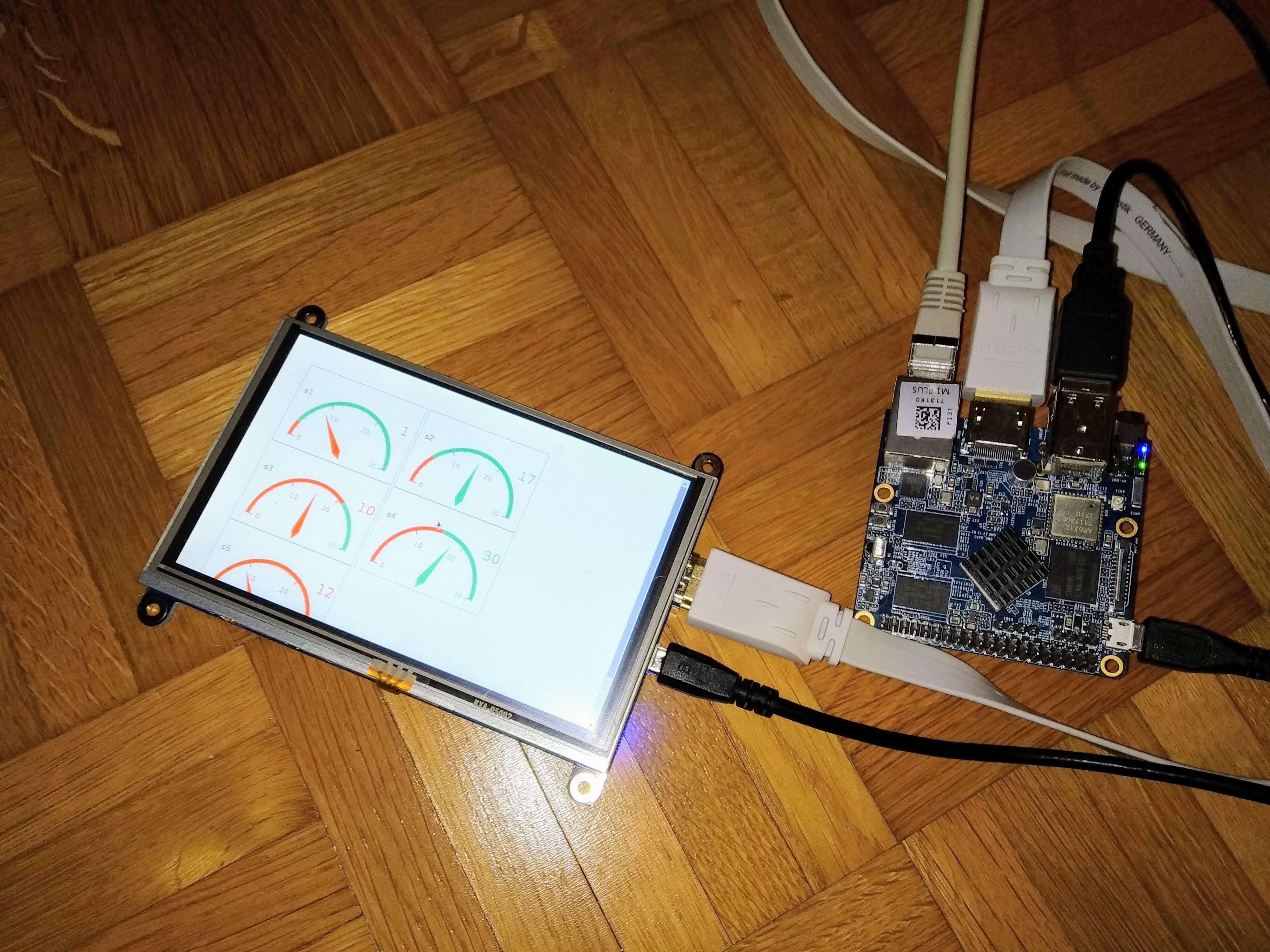Recently, I had to set up a kiosk mode on a NanoPi M1 Plus with a 5" display attached. Kiosk mode, in this case, means starting a browser in full-screen mode.
Here's a short tutorial on how to set this up. The guide mentions some NanoPi-specific tasks, but overall, this should work on any Debian-based Linux system.
Burn Armbian Image to SD Card ¶
As the operating system, I use Armbian, a minimal Debian-based Linux for ARM computers.
The latest version can be downloaded from this address:
https://dl.armbian.com/nanopim1plus/Debian_stretch_next.7z
Unzip it and burn it to a micro SD card. On Windows, my go-to tool for this task is Rufus. Plug in the SD card and boot the NanoPi.
When the NanoPi starts up, it requests a dynamic IP address from a DHCP server on the network. To find out
what IP address it got, you can scan the network with a tool like Angry IP Scanner or with nmap on Linux.
Open an SSH connection to the NanoPi. In my network, the NanoPi got the address 192.168.2.13.
ssh root@192.168.2.13
The first time you log in to an Armbian system, you have to change the root password.
Optional: Install OS on the Internal Flash Storage ¶
This next step is optional and specific to the NanoPi. The NanoPi has flash storage built-in on the motherboard, and instead of using the Micro SD Card, it was a requirement to install the operating system on this internal flash storage.
These steps download the image again and burn it to the internal storage (/dev/mmcblk1):
wget https://dl.armbian.com/nanopim1plus/Debian_stretch_next.7z -O image.7z
apt-get install -y p7zip
p7zip -d image.7z
dd if=Armbian_5.65_Nanopim1plus_Debian_stretch_next_4.14.78.img of=/dev/mmcblk1
shutdown -h now
Remove the Micro SD Card and boot the NanoPi. This starts Armbian from the internal flash storage. Open an SSH connection and change the root password.
Install Kiosk ¶
Now, we continue with the standard installation. First, we update the installed packages and then install the X Window System, Openbox (a window manager), and Chromium.
apt update
apt full-upgrade
apt install xorg xserver-xorg-legacy openbox chromium
Next, we change settings in the Xwrapper.config file:
nano -w /etc/X11/Xwrapper.config
Change the existing line with allowed_users and add a new line with needs_root:
allowed_users=anybody
needs_root_rights=yes
Create a new user. The following startup script will run with this user.
useradd -m kiosk-user
Create a startup script:
nano /opt/kiosk.sh
Insert the following statements. This script starts the window manager Openbox and the Chromium browser.
#!/bin/sh
xset dpms
xset s noblank
xset s 300
openbox-session &
chromium --no-first-run --disable --disable-translate --disable-infobars --disable-suggestions-service --disable-save-password-bubble --start-maximized --kiosk --disable-session-crashed-bubble --incognito https://demo.rasc.ch/wamp2spring-demo-gauge/
Make the script executable:
chmod 755 /opt/kiosk.sh
Create a systemd service file:
nano /etc/systemd/system/kiosk.service
Insert the following content:
[Unit]
Description=Kiosk
[Service]
Type=oneshot
User=kiosk-user
ExecStart=/usr/bin/startx /etc/X11/Xsession /opt/kiosk.sh
[Install]
WantedBy=multi-user.target
Reload the systemd daemon and enable the newly created service, so it will start each time the system boots up.
systemctl daemon-reload
systemctl enable kiosk
Now reboot the NanoPi. When everything is configured correctly, you should see the Chromium browser and the web page
we configured in the kiosk.sh startup script.
